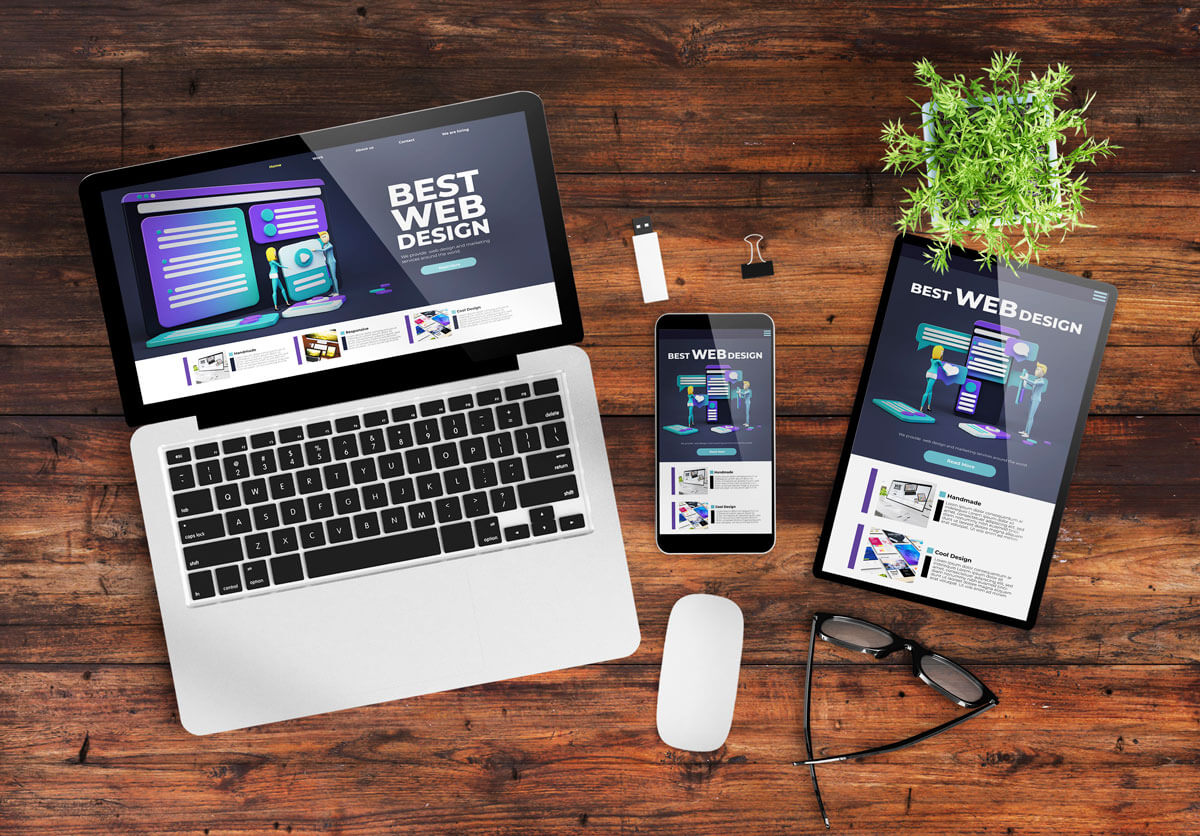Does the ever-evolving world of web design inspire you? With its capabilities and seemingly endless opportunities, staying on top of the latest trends can be challenging. As a web designer, you must have a good working knowledge of the skills necessary to keep up with this rapidly changing landscape and produce high-quality designs for your clients or projects. Here we'll discuss some essential web designer skills you should know — from coding basics to best practices in graphic design — so that you can confidently conquer any website project.
Technical Skills

Proficiency in HTML, CSS, and JavaScript
Technical skills are non negotiable for web designers, and a good knowledge of HTML, CSS, and JavaScript is required. Understanding the HTML structure and syntax allows designers to create the skeletal framework of web pages and define elements. With the help of tags and attributes, they can structure headings, paragraphs, images, and links.
Mastery of CSS empowers web designers to control the layout and styling of web pages. With CSS, designers can adjust the visual aspects of elements, like colors, typography, spacing, and positioning. It enables them to create visually appealing and consistent designs across different devices and screen sizes. CSS also allows for responsive design, ensuring that websites adapt to various viewing environments.
JavaScript allows designers to create interactive features like dropdown menus, image sliders, accordions, and form validations. It provides real-time updates, animation effects, and the manipulation of web page elements based on user actions. JavaScript also facilitates the integration of third-party libraries and APIs, enabling designers to add advanced functionalities to their websites.
Responsive Web Design
Knowing the fundamentals of responsive web design is a game-changer. The first step in understanding responsive design concepts is to take into account elements like fluidity, flexibility, and adaptation. Designers must produce layouts that adapt and function properly across various screen sizes and resolutions.
Adapting layouts for different screen sizes and devices is a skill of its own. Web designers must ensure that their websites are visually appealing but also accessible and functional. This entails adjusting the layout, typography, and navigation elements to accommodate different screen sizes, guaranteeing a user-friendly experience regardless of the device used.
The technique most web designers use is implementing media queries and fluid grids. Media queries allow designers to apply specific CSS styles based on the characteristics of the user's device, such as screen size, orientation, or resolution. Fluid grids, on the other hand, enable the creation of flexible and proportionate layouts that adapt dynamically as the screen size changes.
Graphic Design and Image Editing
Each web designer must own graphic design and image editing skills to create stunning websites if they want to avoid hiring a professional for that.
The minimum requirements include a basic knowledge of graphic design principles. This involves having a good eye for aesthetics, composition, color theory, and typography. Web designers must know how to create a visual hierarchy, balance elements, and convey a visual message to attract visitors.
Proficiency in design software like Adobe Photoshop, Adobe Illustrator, Sketch, or others is highly valuable. These tools provide designers with features for creating and manipulating graphics, images, and layouts.
User Experience (UX) Design
User Experience (UX) Design is a recent skill required for web designers, and one of its fundamental principles is user-centered design. This approach revolves around understanding and addressing the target users' needs, goals, and behaviors. To succeed requires good user research and usability testing. This research helps in creating a website that fits the specific needs of the users, ensuring a more satisfying experience.
Creating user personas and user flows is another crucial aspect of user-centered design. User personas are fictional representations of typical users, incorporating demographic information, goals, and motivations. These personas help designers empathize with their target audience and make informed design decisions.
User flows, on the other hand, map out the paths users take to accomplish specific tasks on a website. By creating well-defined user flows, designers can make sure the website's navigation and functionality align with users' expectations.
Incorporating user feedback into the design process is an ongoing and iterative practice in user-centered design. Gathering feedback from users, either through surveys, interviews, or usability testing sessions, provides valuable insights into how well the design meets their needs and expectations.
Information Architecture

Well-Organized content
Information architecture involves the skill of organizing and structuring content in a way that is logical, coherent, and user-friendly. Web designers must carefully consider how to categorize and arrange the information on a website, ensuring that it is easily accessible and digestible for users. For example, creating clear hierarchies, using consistent labeling and terminology, and implementing effective navigation systems.
Designing intuitive navigation systems
Intuitive navigation is an integral aspect of information architecture. Web designers must create navigation systems that are intuitive, user-friendly, and easy to understand. This involves designing navigation menus, buttons, and links to guide users through the website effortlessly. Designers must consider user expectations and behaviors, ensuring navigation elements are clearly labeled, logically organized, and prominently positioned.
Creating wireframes and prototypes
Wireframes and prototypes are essential tools in information architecture. Web designers use wireframes to outline web pages' basic structure and layout, focusing on content organization and functionality rather than visual design.
Wireframes serve as a blueprint for the website, helping designers and stakeholders visualize the information architecture.
Prototypes, on the other hand, provide interactive representations of the website, allowing designers to test and refine the navigation and user interactions. Creating wireframes and prototypes helps to iterate on the information architecture, ensuring that the structure and flow of the website align with user needs and expectations.
Accessibility
To achieve accessibility, web designers must thoroughly understand web content accessibility Guidelines (WCAG). WCAG provides a set of internationally recognized standards for creating accessible web content. Designers need to familiarize themselves with these guidelines to ensure that their websites meet the necessary accessibility requirements. This includes understanding the principles of perceivable, operable, understandable, and robust content.
Designing with accessibility in mind also involves considering various accessibility aspects during the design process, such as color contrast, which ensures that text is legible for people with visual impairments. Web designers must provide alternative text for images, allowing users who rely on screen readers to understand the content.
Communication and Collaboration Skills

Communication with Clients
It might seem like a secondary responsibility at first, but communication and collaboration skills are essential for web designers, particularly when it comes to interacting with clients. Web designers must attentively listen to client needs, preferences, and goals to thoroughly understand their requirements. They should ask relevant questions and seek clarification when necessary. By staying in contact with their clients, designers can establish a strong rapport, create trust, and ensure their design work aligns with client expectations.
Once designers have a clear understanding of client goals, they need to convert those requirements into tangible design concepts. This may involve creating wireframes, mock-ups, or prototypes visually representing the proposed design solutions.
Managing client expectations and providing regular project updates can be challenging, but it's important for successful client interaction. Web designers must communicate project timelines, deliverables, and potential limitations or challenges. It is important to set realistic expectations and ensure clients clearly understand the design process. Regular project updates, such as progress reports or milestone demonstrations, keep clients informed and involved throughout the design process.
Collaboration with Developers
Collaboration with developers ensures the seamless implementation of design concepts into functional websites. Web designers must work closely with developers to ensure that their proposed design ideas are feasible and align with technical requirements. This collaboration involves open and frequent communication, where designers and developers discuss the project scope, goals, and any potential challenges. By engaging with developers from the outset, web designers can create visually appealing and technically viable designs.
Understanding technical constraints is another aspect of collaborating with developers. Web designers must know the limitations and possibilities of various web technologies, frameworks, and programming languages. This understanding enables designers to adapt their designs accordingly, ensuring that they can be implemented effectively by the development team.
Keeping Up with Industry Trends
Almost every day, we hear about new trends online, which increases the importance of keeping up with them even more. Continuous learning is a fundamental skill that web designers must cultivate. This involves staying updated on the latest web design tools, technologies, and frameworks. As the industry evolves rapidly, designers need to invest time in learning new design software, coding languages, and emerging technologies to enhance their skill set and adapt to evolving client needs.
Following design blogs, forums and attending industry events are essential for staying informed about the latest trends and best practices in web design. Design blogs and forums provide valuable insights, tips, and tutorials from experts and fellow designers. They offer opportunities to learn from real-world examples and engage in discussions to expand knowledge.
Expanding knowledge beyond design to include UX/UI trends and front-end development is highly suggested for web designers. User experience (UX) and user interface (UI) trends heavily influence modern web design. Designers must understand user behavior, psychology, and interaction patterns to create intuitive and engaging user experiences.
Remember the rise of the mobile-responsive design trend? Websites now need to be optimized and aesthetically pleasing across many screen sizes and resolutions due to the rise in smartphones and tablets. To guarantee a fluid and uniform user experience across various devices, web designers must adjust their designs. This trend led to the development of responsive design techniques, such as flexible grid systems, scalable images, and media queries.
Conclusion
As a web designer, having an eye for detail is critical. Taking the time to study your design skills and recognize which components can maximize your effectiveness is invaluable. If you want to become a successful web designer, practice and improve these essential skills. Learn the best ways to choose stylized fonts, implement navigation elements, manipulate color with purpose, select images that reflect the intended message, incorporate multimedia and interactive capabilities, and optimize coding for faster load times. With dedication and focus, you will have no problem mastering these web designer skills over time.
FAQs
What are the most essential web designers skills they should master?
Every web designer should master user-centered design, information architecture, accessibility, visual design, interaction design, and developer collaboration. These skills collectively enable designers to create user-friendly, visually appealing, and technically feasible websites.
Why is continuous learning an essential skill for web designers?
Continuous learning is especially important for web designers because the industry evolves rapidly. New tools, technologies, and design trends emerge regularly, and staying updated is essential to remain competitive. By continuously learning, web designers use new tools, adapt to changing client needs, and deliver innovative design solutions.
How can web designers stay updated with industry trends?
Web designers can stay updated by regularly exploring design blogs and forums and attending industry events such as conferences or workshops. Following influential designers and design-focused websites on social media platforms can also provide valuable insights into the field's latest trends, techniques, and best practices.
Are technical skills like coding necessary for web designers?
While not all web designers need to be proficient coders, having a basic understanding of front-end development is highly beneficial.
How does mastering user-centered design benefit web designers?
Mastering user-centered design is essential for web designers as it focuses on creating websites that prioritize the needs and preferences of users. By conducting user research, usability testing, and incorporating user feedback into the design process, web designers can create intuitive and user-friendly experiences. User-centered design enhances customer satisfaction, increases engagement, and ultimately leads to the success of a website.
Why is effective communication a critical skill for web designers?
Effective communication is crucial for web designers as it facilitates successful collaboration with clients, developers, and other stakeholders. Clear and concise communication allows designers to understand client requirements, manage expectations, and provide project updates. Strong communication skills help designers convey their design concepts, rationale, and ideas effectively, ensuring the vision is understood and implemented correctly.




